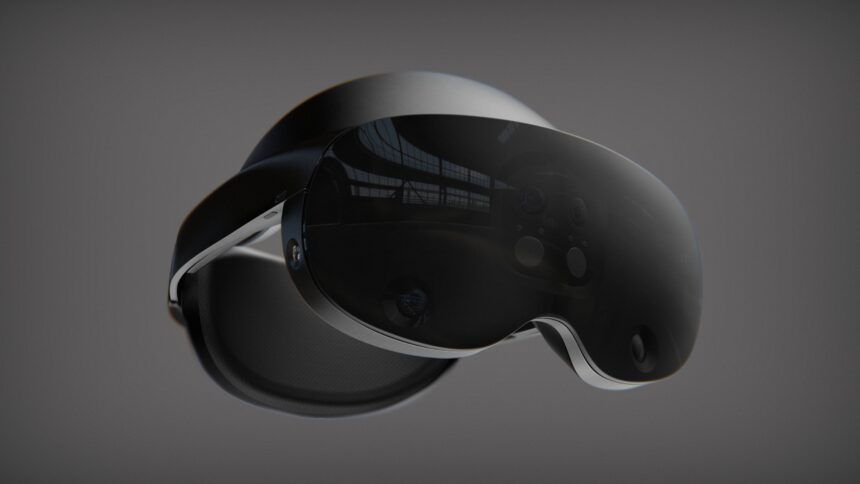Meta Quest 2: Moon Player lets you watch movies in AR

Moon VR Player uses video-based AR via the Meta Quest 2's passthrough mode, so you can watch videos in augmented reality.
Moon VR originally appeared for the long-discontinued Samsung Gear VR. In 2017, the team ran out of money and development ceased. However, a voluntary continuation allowed it to be ported to the Oculus Go. Since this was also discontinued after the release of Quest and Quest 2, the Moon VR Player disappeared into oblivion for the time being.
Now the app has resurfaced and brings along an interesting feature: You can watch videos on the Meta Quest 2 with the Moon VR Player and keep an eye on reality at the same time via the passthrough mode.
Passthrough on the Meta Quest 2: A touch of Mixed Reality
The Passthrough feature was originally designed to create the Guardian network that bounds your virtual game environment in real space. For this purpose, the Quest 2 streams the image from the tracking cameras to the VR headset's display.
Meta has introduced more features with later updates. For example, if you tap twice on the VR headset's case, you will see a livestream of your real environment. Meanwhile, Passthrough also allows embedding a real desk, keyboard or sofa into the virtual reality, which makes the augmented reality mode more and more important.
Moon VR: Experience standard and 180-degree videos in AR
In Moon VR, you can watch videos while keeping an eye on your surroundings. In passthrough mode, the app plays normal "flat" videos on a virtual screen that is positioned in real space. For 180-degree videos, you simply turn around for a view of reality.
Via "Moon Link" you can wirelessly stream videos from your PC to the Quest 2 in the Moon VR player. The app supports mkv, mp4, wmv, mov, avi, rmvb and flv.
Moon VR is available now for free via App Lab in the Meta Store. You can find more features on the product page.
Are more AR features coming to Meta Quest 2 soon?
Since last summer, developers have been able to access the Quest 2 Passthrough API and integrate the view-through into reality in their VR apps. Back in February, Google announced a feature for YouTube VR that also uses the Quest 2 Passthrough mode.
When watching a YouTube video, the passthrough mode can be activated, just like in Moon VR. Google goes one step further and lets you permanently attach the YouTube screen to a real location of your choice like a TV or monitor. The app remembers the location and the virtual screen appears in the same spot every time you start it (see video above).
The fact that Google is testing this feature with Quest 2 could be a hint that the company is working on its own augmented reality hardware - it's rumored to go by the name Project Iris. The former optics chief for Microsoft Hololens recently moved to Google, and he could be involved in this project.
Passthrough on Quest 2 teases AR future
The permanent anchoring of the AR screen in reality works thanks to the experimental interface Spatial Anchors. Developers can try it out, but an implementation for store apps is not yet possible. Once Spatial Anchors is generally available, more apps with similar features might appear for the Meta Quest 2.

Meta's high-end VR headset Cambria is scheduled for release in 2022. The image shows an exemplary rendering that is supposed to match the original design quite closely. | Image: Marcus Kane / Brad Lynch
Still, AR Passthrough on the Quest 2 is only a foretaste of Meta's future AR ambitions. The tracking cameras of the standalone VR headset only stream a low-resolution image in grayscale.
With stronger hardware, however, video-based mixed reality could become the main feature for Meta's announced high-end VR headset Cambria (info). Meta plans to launch the first full-fledged AR glasses starting in 2024, according to a recent report from The Verge.
Note: Links to online stores in articles can be so-called affiliate links. If you buy through this link, MIXED receives a commission from the provider. For you the price does not change.